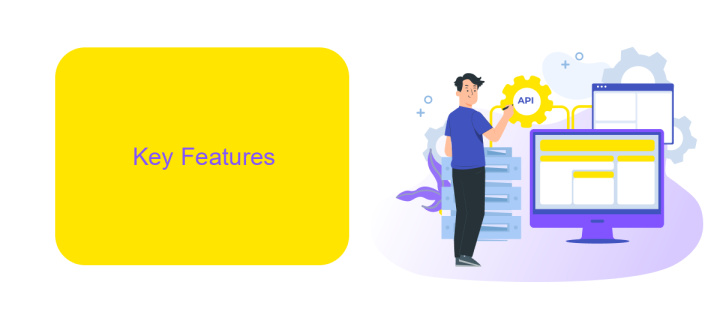Qlik Replicate Vs Fivetran
When it comes to data integration and replication, choosing the right tool can significantly impact your organization's efficiency and data accuracy. Qlik Replicate and Fivetran are two leading solutions in this space, each offering unique features and capabilities. This article will compare Qlik Replicate and Fivetran, examining their strengths, weaknesses, and ideal use cases to help you make an informed decision.
Introduction
In today's data-driven world, businesses are constantly seeking efficient ways to integrate and manage their data across various platforms. Qlik Replicate and Fivetran are two prominent solutions that help organizations streamline their data integration processes. Both tools offer unique features and capabilities, making it essential to understand their differences and advantages.
- Qlik Replicate: Known for its real-time data replication and transformation capabilities, Qlik Replicate supports a wide range of data sources and targets.
- Fivetran: Fivetran is renowned for its automated data pipeline creation and maintenance, offering seamless integration with numerous data warehouses and SaaS applications.
- ApiX-Drive: This service simplifies the integration process by providing an easy-to-use interface for connecting various applications and automating data workflows.
Choosing the right data integration tool depends on your specific needs and technical requirements. While Qlik Replicate excels in real-time data handling, Fivetran offers robust automation for data pipelines. Additionally, tools like ApiX-Drive can further enhance your integration strategy by providing user-friendly solutions for connecting and automating multiple applications. Understanding these options will help you make an informed decision for your data integration needs.
Key Features

Qlik Replicate offers a robust set of features designed to simplify and accelerate data integration. It provides real-time data replication, ensuring that your data is always up-to-date across various platforms. Qlik Replicate supports a wide range of data sources and targets, including on-premises and cloud databases, making it highly versatile. Additionally, it offers automated schema propagation, which reduces the need for manual intervention and minimizes errors during data migration processes.
Fivetran, on the other hand, focuses on automated data integration with a strong emphasis on ease of use. It provides pre-built connectors for a multitude of data sources, enabling quick and seamless data extraction and loading. Fivetran's automated schema management ensures that any changes in source data structures are automatically reflected in the destination, reducing maintenance efforts. For those looking to further streamline their integration processes, services like ApiX-Drive can be invaluable, offering additional tools to automate and manage various integration tasks efficiently.
Architecture

When comparing the architecture of Qlik Replicate and Fivetran, it's essential to understand their core components and how they function. Qlik Replicate leverages a distributed architecture that includes source and target endpoints, a central server, and agents deployed on the data sources. This setup ensures real-time data replication with minimal latency.
- Qlik Replicate: Utilizes a distributed architecture with source and target endpoints, a central server, and agents.
- Fivetran: Employs a cloud-based architecture that centralizes data integration processes, eliminating the need for on-premises agents.
- ApiX-Drive: Facilitates seamless integration and automation between multiple services, enhancing both Qlik Replicate and Fivetran workflows.
Fivetran, on the other hand, offers a cloud-native architecture that simplifies the setup process by centralizing data integration tasks in the cloud. This eliminates the need for on-premises agents and reduces maintenance overhead. Both platforms can be further enhanced by using ApiX-Drive, a service that automates data integration and streamlines workflows, making it easier to manage complex data environments.
Pricing

When it comes to pricing, Qlik Replicate and Fivetran offer different approaches that cater to various business needs. Qlik Replicate generally operates on a subscription-based model, where the cost depends on the volume of data and the number of endpoints. This can be advantageous for businesses that require extensive data integration capabilities and are looking for a scalable solution.
Fivetran, on the other hand, adopts a consumption-based pricing model. This means that you only pay for the data you actually replicate, making it an attractive option for companies with variable data volumes. Fivetran's pricing is transparent and can be easily estimated using their online calculator, which helps businesses budget more effectively.
- Qlik Replicate: Subscription-based, scalable, volume-dependent.
- Fivetran: Consumption-based, pay-as-you-go, transparent pricing.
For businesses looking to streamline their integration processes without heavy upfront costs, services like ApiX-Drive can be a valuable addition. ApiX-Drive offers easy-to-use tools for setting up integrations quickly and efficiently, complementing both Qlik Replicate and Fivetran by providing additional flexibility and automation capabilities.
Conclusion
Both Qlik Replicate and Fivetran offer robust solutions for data integration and replication, each with its unique strengths. Qlik Replicate excels in providing real-time data replication and supports a wide range of data sources and targets, making it ideal for enterprises needing comprehensive data management. On the other hand, Fivetran stands out for its ease of use, automated data pipelines, and quick setup, which can be particularly beneficial for smaller organizations or those looking to streamline their data integration processes.
Ultimately, the choice between Qlik Replicate and Fivetran depends on your specific business needs and technical requirements. For businesses looking for additional flexibility and ease of integration, services like ApiX-Drive can further enhance the capabilities of both platforms by providing seamless connectivity between various applications and systems. By carefully evaluating the features and benefits of each tool, you can select the one that best aligns with your organizational goals and data strategy.


FAQ
What are the main differences between Qlik Replicate and Fivetran?
Which tool is better for real-time data replication?
How do these tools handle data transformation?
What kind of support and resources are available for implementation?
Which tool offers better scalability for growing businesses?
Do you want to achieve your goals in business, career and life faster and better? Do it with ApiX-Drive – a tool that will remove a significant part of the routine from workflows and free up additional time to achieve your goals. Test the capabilities of Apix-Drive for free – see for yourself the effectiveness of the tool.

